|
We have now been seeing patients in the clinic for two full months and while things are a little different, providing first class care remains the same. During the shut down we took this time as an opportunity to revamp our internal software system. This dramatically improved our ability to take online bookings for many practitioners. You can start by going here to see all your options. We also started providing "virtual appointments", which we continue to provide as an option for those patients who feel more comfortable starting with an online visit. 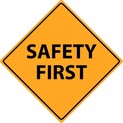 When you do come to the clinic you will see that things are a little different. At Physio Sport Med of Oakville we follow the Ontario Provincial guidelines along with the guidelines specified by the various colleges that regulate our practitioners. This targets the safety of our patients, practitioners and staff. We take it seriously. Here's what you should expect at your next visit.
While Ontario has done very well so far to bring Covid numbers down, we continue to recognize the need to be vigilant to help avoid local outbreaks and the feared second wave. Please help us in this endeavor when you come to visit. As you get back into your regular exercise routine rest assured that we are here to help with any issues or injuries that you encounter. Thank you very much for your continued business!
0 Comments
Tricia Hayton, Registered Physiotherapist When your doctor tells you that physiotherapy would be a good way to reduce the pain and increase the function of your sore joint or muscle, it can be overwhelming. Some physicians will refer you to a clinic that they prefer. Some own the clinic they refer you to and therefore have reasons other than your health to refer you there. We find that most people go home, do a google search, read the reviews and pick a clinic that is convenient, but still seems to be a strong candidate.
But what should you look for in terms of proper treatment? Recently, the British Journal of Sport Medicine printed an article by Lin et al. to help answer that question. They looked at 6232 records and 44 practice guidelines to determine what the best practices are for treating musculoskeletal injuries. They found that there were 11 things that should be considered when treating injuries:
Take this information and ask questions during your assessment. A high-quality therapist will be able to answer all of your questions confidently, and will be able to address the items above. If your treatment consists solely of machines and hot packs, or even hands on therapy without exercise, you may not be getting all of the benefits of treatment. This not only wastes time and money – but keeps you from being the best that you can be. Tricia Hayton, Registered Physiotherapist I thought that I would spend today answering some of the most common questions that we get about physiotherapy. If you have a question, please feel free to comment below or reach out to one of our staff.
1. Is physiotherapy covered by OHIP? The medical services at Physio Sport Med of Oakville are the only services that are covered by OHIP. This means that if you are booked in to see one of our medical doctors (not chiropractors), we are able to bill the provincial services. If you need an injection, there will be a charge as we cannot bill OHIP for the cost of the medication. There are some physiotherapy clinics in Ontario that are covered for qualified patients. However, they have a different model of service and you will not get the quality one on one time with your physiotherapist. For more information, please go to: http://www.health.gov.on.ca/en/public/programs/physio/pub_clinics.aspx 2. Do I need a referral? Our physicians are specialists, and although it is not mandatory, it is preferred that you get a referral from your family doctor to see them. This helps with communication between professionals and makes sure that our physicians have all the information they need to give you the best quality care. Our other professionals do not need a referral. However, please note that your insurance may require a referral for it to be covered. Please check your personal plan or with your human resources department to determine if a referral is needed for insurance coverage. 3. How does billing the insurance work? At Physio Sport Med, we can bill many insurance companies directly for you, as long as your plan allows it. This means that you are only pay the co-payment at the time of your visit. 4. How do I know that physiotherapy/chiropractic will work for me? The physiotherapists and chiropractors at Physio Sport Med are experts in injuries and illness of the bones, joints, muscles and how they work together. If you have any problems with the musculoskeletal system, there is probably something that we can do to help. However, if you are still uncertain, we ask you to book a free 15-minute consult where we can discuss your concerns directly. 5. What can I expect from the first treatment? Your first appointment should take almost a full hour, your therapist will look at your range of motion, strength and movement patterns. A range of special tests will be done to determine which structures are damaged and what is causing the damage. A complete assessment will involve the joints below and above the pain and may also look at joints far from the injury. After the assessment is complete, you will start your treatment right away. 6.Do I need to wear special clothes? You might. We do need to have access to the joint that is sore, and usually that means being able to get right to the skin. This means that if it is your shoulder or arm that is sore, a loose t-shirt or tank top is preferred. Shorts are necessary to treat your knees and hips. Do not worry if you forget, if have a small supply of items that you can borrow if you need to. 7. Will it hurt? Some people find that the assessment is a little unpleasant. We do need to determine what structure is sore and what movements cause the pain. However, if you provide your therapist with a lot of feedback and let them know as soon pain starts, your discomfort will be minimal. There are some treatments that can be tender. Again, feedback to your therapist is necessary to keep this to a minimum. Remember that you are in charge. All treatment, including risks, will be discussed with you before they begin. If you are not okay with it, just let your therapist know and an alternative will be found. 8.What if I don’t want to get acupuncture needles? That is okay. The risks and benefits of all treatments, including acupuncture, will be discussed before treatment begins. If you are not comfortable, then just let us know and we will seek another tool. With over 50 years of combined practice, we have a lot of experience to draw from. Stephanie MacNeill, RD, MHSC, Sports Dietitian Many individuals feel like they have their nutrition under control, and then BAM, it’s the holiday season. The holiday season usually means lots of rich, sweet, and high fat foods that don’t necessarily fit with a healthful diet. One of the biggest problems for many people is the development of an all-or-nothing mindset. You’re either on track with your healthy eating efforts or you give up on them all together and get back on track when the New Year passes. This binary way of thinking doesn’t account for shades of grey, and can be responsible for a great deal of negative evaluation of yourself. The reality is, you can remove yourself from both of these categories, because it’s totally possible to stick to your healthy eating plan while fully enjoying the food and festivities this holiday season. Use these tips to help make the holiday season stress-free when it comes to food. 1. Balance your plate and make it colourful Create a balanced plate by filling 1/2 your plate with vegetables and fruit, 1/4 of your plate with whole grains, and the last 1/4 of your plate with lean protein. With vegetables and fruit, aim for colour and variety! And remember, potatoes don’t count as vegetables. Whole grains include whole wheat, barley, wheat berries, quinoa, oats, brown rice and foods made from them. Whole grains offer a “complete package” of health benefits, unlike refined grains, which are stripped of valuable nutrients during processing. Fish, poultry, and beans are all healthy, versatile protein sources—they can be mixed into salads, and pair well with vegetables on a plate. Limit red meat, and avoid processed meats such as bacon and sausage. 2. Be the one who brings the veggie/fruit tray Eating well comes down to colour: your plate should have less brown and white and more rainbow, especially orange and green. It's tough to make at least half your plate vegetables if there are no actual vegetables being served. So be the person that brings a fruit or veggie tray to the holiday gathering. That way you know there will be some colour at the party. If you’re feeling festive, you can make a holiday themed tray, or just bring a regular tray. And while we’re on the subject of vegetables, before you enjoy the roast turkey or savory stuffing, have a serving of the vegetable dish that you brought. This ensures that you actually eat the vegetables before getting too full. And because vegetables are high in vitamins, minerals, and fiber, it’s a great recipe for overall health. 3. Avoid skipping meals This is a popular strategy for holiday eating. Skipping breakfast and lunch in order to “save calories” for that extravagant holiday dinner. This may sound like a good idea, but it often leads to overeating. Instead, start the day with a balanced breakfast that includes some lean protein, complex carbohydrates and some colour (veggies and fruit). Then continue to eat consistently throughout the day like you would any other day. This will help to keep hunger and cravings in check so they don’t take over later at your holiday meal. 4. Rethink your drink Alcohol is served at many holiday events, but they can be a real hindrance when it comes to health and wellness. While one or two won’t make or break your diet, it’s easy to get carried away when you're in a celebratory mood. If you’re going to drink, try to alternate between water and alcohol to minimize your intake and to help you stay hydrated. Also consider using low-calorie mixers such as seltzer or tonic water as a mixer for hard liquor to help reduce added calories. 5. Use the heck yes or no filter Try using the ‘heck yes or no’ filter when making food choices over the holidays. How does it work? If there’s a food that you really want, and it’s only around this time of the year, then check the box for ‘heck yes’. For example, my mom usually makes a flourless chocolate cake a couple of times and year, so you can bet that I’m definitely having a piece!
On the other hand, if you’re on the fence about a food, and not really sure that you want it, just take a pass. Regardless of your food decision, remember that it’s your decision! Don’t feel pressure to have something just because everyone else is. And don’t feel guilty for having something that you really truly enjoy. 6. Utilize your hunger and fullness cues Try to eat intuitively and recognize when you are hungry and when you are full. When you are eating, make a point to pay attention to your food. Appreciate the different textures. How does your food smell? How does it taste? Chew well until you can taste the essence of the food. (about 15 to 30 times, depending on the food.) You may be surprised at all the flavours that are released. You mind just find that mindfulness helps you eat less. 7. Get moving You’ve got a lot on your plate this time of the year, and often physical activity can get passed over. But being active is your secret holiday weapon. Physical activity can help you decompress from the holiday stress and help maintain good health. So get moving with family and friends this holiday season. If you’re at a family gathering, suggest a walk before the feast or even between dinner and dessert. 8. Lose the guilt Holiday foods are part of your family tradition and culture and should be embraced and enjoyed. Do not feel guilt over enjoying these foods, they contribute to the memories that you will cherish from the season. For help getting your nutrition on the right track this holiday season, consider booking an appointment with a registered dietitian. Happy Holidays! Tricia Hayton, Registered Physiotherapist 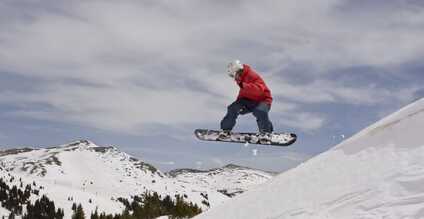 It has happened - the first snowfall of the year. In my house, it is always an event filled with excitement and promise. Promise of hitting the slopes in the days (okay, months) to come. For me, that means tuning the skis and endless reps of squats and twists to prep the quads. But my boys are snowboarders, how does their prep differ from mine? How do they prep for the slopes to keep up with their Mom? The number one difference is the calves. Working the toe edge of your board can really take a toll on your calves. Calf raises are a great way to work the muscle in your calf. Standing on one foot, slowly raise up onto your toe and lower. For a little extra work, hold onto a 10- to 20-pound dumbbell. To get a little bit of bonus balance work, stand on a foam pad or boscu ball while doing the exercise. Obliques are working a little harder as well. I am not saying that skiers don’t need to work those twisting muscles, but the demands are higher in boarding. I am currently a big fan of the standing twist exercise as muscles are very position specific and generally, we are trying to avoid laying on our backs on the hills. For this exercise, you will need a partner. Grab a medicine ball that is the right weight for you, stand in a slight squat position on the “ball” side of the boscu ball. Have your partner stand behind you, twist to one side and hand the ball to your partner. Twist fully to the other direction and grab the ball from your partner. Keep going for 30 reps. Make sure to repeat the exercise to the other side. Of course, there is one big similarity. Quads! Boarders need to be doing their squats and lunges too. Adding a jump squat is a great way to improve performance on the jumps or in the parks. How do you prep for the season? Let us know by commenting below. See you on the slopes! Dr. Chris Woollam, MD & Danielle Boudreau 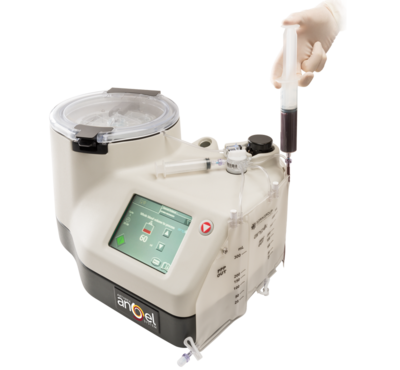 We are pleased to announce that our physicians are now doing Platelet Rich Plasma injections, more commonly known as PRP, at our clinic. You may have heard about PRP in the news as it is commonly used among professional and elite athletes. However, PRP is not just a treatment option for athletes. There are many people who could benefit from PRP injections. PRP involves injecting a more concentrated level of platelets from the patient’s blood back into the area of concern. Blood consists of liquid, known as plasma, as well as solid particles such as red and white blood cells and platelets. Platelets contain many growth factors which play an important role in the healing process. The purpose of PRP is to create a higher concentration of platelets in the blood, hence the name – Platelet-Rich Plasma. In order to increase the concentration of platelets, blood is drawn from the patient, spun in a centrifuge, and separated into it’s components. The platelet-rich portion is then injected back into the area of concern. It is thought that by increasing the concentration of platelets in the injured area, and therefore increasing the number of growth factors, it will speed up the healing process. PRP can be effective in treating arthritis, tendon and ligament injuries in the elbow, shoulder, and knee, among others. The research into this method is ongoing. If you are interested in PRP, you can call us at 905-257-3456 for more information. You will need a consultation with one of our sports medicine physicians prior to receiving PRP treatment to make sure that this is an appropriate treatment option for you. The consultation is covered by your provincial health plan (such as OHIP). Danielle Boudreau, Office Manager & Former Lacrosse Player As an athlete, there are many reasons why you may choose to play through an injury. Firstly, as an athlete, your love for the game makes it devastating to sit out and watch your team from the stands. You may also feel bad that you are unable to help your teammates reach their goals. Finally, you may feel pressure from coaches, teammates, parents, or trainers to return to sport before you are ready. As a former athlete, I understand this predicament first-hand. In my second year of varsity lacrosse at the University of Guelph, I experienced a chain of injuries starting with a pulled quad during training camp. As I played through each injury, my body compensated for the weak/injured area and a new issue would appear. As a result, I woke up the first morning of our championship weekend completely unable to bend over without my legs giving out because of a back injury. Had I taken the appropriate amount of time to recover from the minor pulled quad, I would have been able to help my team and play in our championship weekend. I spent the next two seasons at countless physiotherapy appointments so that I could make it through game days with as little pain as possible. It’s been 5 years since my last season and I still experience back pain to this day.
Our team of therapists at Physio Sport Med understand and will help you get back to sport as quickly and safely as possible. You may even find that you don’t need time away from your sport depending on the injury. We don’t want to pull you from sport unless medically necessary. With proper treatment and modifications (taping, bracing, etc), you may be able to still play. If needed, we also have a sports psychologist available to help you navigate through the challenging time of injury recovery. We are here to help!
Tricia Hayton, Registered Physiotherapist Since Durant’s recent quick exit from the NBA series, calf injuries have been a hot topic of conversation. What was the initial injury? How did it change so drastically? First, a little anatomy lesson is needed to understand what happened. The calf is made up of two or three muscles. The deepest is a very small muscle called the plantaris. About 20% to 30% of the population do not even have this muscle, however they do not have any change in function or athletic ability. More critical to function, are the soleus and gastrocnemius. These muscles are large, powerful muscles that propel the body up (as in jumping) and forward (as in running). They blend together to form a strong tendon called the Achilles tendon. The initial injury was called a calf strain. This is a small tear or fray of the muscle of the calf. Although technically it can occur anywhere in the gastrocsoleus complex, it most commonly occurs where the head of the gastrocnemius gradually blends into a tendon. If you were to look at a muscular calf, the surface muscle, the gastric, is made up of two circular heads that come together about two-thirds of the way down the shin bone. Where these circular heads come together is where the tendon starts. This is the most common location for a strain. Medically, we grade strains as first, second, or third. A first-degree strain is when the muscle pulls and stretches beyond what is comfortable, but there is no tear of the fibers. A second-degree strain is where the stretch tears some of the muscle fibers, but the muscle is still securely connected to the bones at each end. A third-degree tear is when the muscle tears in two. The injury suffered by Durant during the finals was an Achilles tear or rupture. This is very similar to a Grade three strain. The tendon has been torn in two and is no longer connecting the two bones. This means that the muscle is no longer able to generate any power. Thus, Durant can no longer run or jump. Surgery or serial casting is needed to repair this injury. Each case is analyzed by an orthopedic surgeon and the most appropriate way of completing the repair is decided. Factors considered include age, athletic demands, time span until return to sport, and severity of tear. Complete rehabilitation of this injury typically takes 6 months to return to sport, although we all know that a professional player may bend this rule slightly. I think the critical lesson for those of us in sports medicine is that we need to make sure that we are not encouraging our athletes to return to sport too early. Proper strengthening and healing is critical because although the risk of reinjury may be small, the consequence is huge. Tricia Hayton, Registered Physiotherapist Concussion is a hot topic in schools. Thousands of students from Kindergarten to university suffer concussions each year. This can be from a fall, a car accident or from sports. Following a concussion, cognitive and physical rest is prescribed. Recent studies have shown us that this rest should be limited to approximately 24 to 48 hours. After that amount of time, sub-symptomatic activities can actually be beneficial in restoring brain function and reducing symptoms. We often hear about athletes returning to sports. Our professional athletes will have “red jersey” practices where they get back to their technical and fitness skills but refrain from contact. When tolerated, they begin contact and eventually return to the games they love. But how does a student return to school? What are the steps? There are some simple guidelines: 1. For student athletes, return to school should precede any attempt to return to sport 2. Like return to sport, return to learn should be coordinated by a trained medical professional. Ideally, a team of professionals including therapists and doctors is best. 3. There are four stages to return to learn. A student progresses through each stage when the current demand is met without any increase in symptoms for a minimum of 24 hours. 4. If symptoms increase as they progress, they are to return to the previous level for a minimum of 24 hours. The stages of return to learn include:
1. Light cognitive activity: this includes reading and games done at home 2. School type work/light physical activity: this is work done that is similar to the demands of school, but in 30-minute blocks. Some light activity, such as going for a walk, is encouraged. 3. Part time school: this can be divided into light load and moderate load, indicating the time spent in school, including hours per day or days per week 4. Nearly normal workload progressing to full time demands: Time and homework are increased as tolerated. At this point, accommodations are often needed as only certain aspects will increase symptoms (ie: reduced computer time). Physical Education class is not included as it should be increased during the return to sport phase. For more information please visit: http://horizon.parachutecanada.org/wp-content/uploads/2017/06/RTL-Parachute-2018May.pdf. The staff at Physio Sport Med work as a team to help guide you through these challenges. If you think that we could help you or someone you love, please give us a call. Tricia Hayton, Registered Physiotherapist Habits of musicians are often compared to elite athletes. They practice for hours a day to perfect their skills to achieve success in a very competitive environment. Like the athlete, these habits can cause damage to the body and result in injury. Injuries that mean time away from gigs, income, and in the worst-case scenario, a change of career. So, what can be done? There are two main factors that contribute to overuse injuries in musicians. 1. Repetition: As it sounds, this means that the body is performing an act over and over again until it is perfected. However, damage begins when there is not adequate rest. Initially, the musician will complain of fatigue and tension near the end of the session. This develops into pain during the session, and then lingering pain when one is away from their instrument. The most common overuse injury is tendonitis. 2. Asymmetry: This refers to the need to hold the body in an unbalanced position for an extended period. An example is a violinist tilting their head to support the instrument as they play. This can alter the movement patterns of a joint, increasing the risk of injury. For example, our violinist may develop a nerve impingement on the side towards her violin due to neck posture and reduced space for the nerves to travel from the neck to the arm. 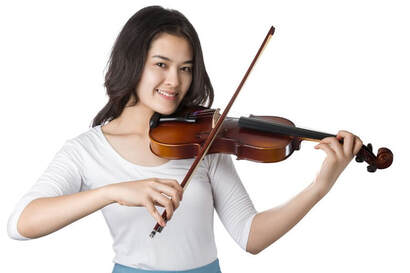 What are the warning signs? 1. Fatigue near the end of a practice session. This can also be felt as tension at the end, or in between sessions. 2. Tingling in the hand or arm. There are some overuse injuries that can cause neural compression (thoracic outlet syndrome, for example). This compression will often begin with a tingling in the hand and arm that is relieved with a change of position. 3. Weakness of the hand or the feeling of being uncoordinated. 4. Fatigue or discomfort when carrying instrument from a gig or practice. What can be done?
1. Movement Screen: A physiotherapist or sports chiropractor can complete a movement screen. This will give indications where muscle imbalances are building. Exercises will then be given to correct the imbalance (to go back to my athlete comparison – this is the same as cross training). 2. Postural education and core strengthening. 3. Pain management: sometimes you just need to get through a busy time – whether it is a testing period, recital, or short running performance, then you will take rest and let the body heal. Pain management with modalities, acupuncture, or manual therapy can help through this time. Please realize this is not a long-term solution. 4. Technique analysis: looking at your movement screens together with a musical teacher or coach, the method that you use to hold or manipulate the instrument can be slightly altered. Like athletes, musicians may be nervous that this will alter performance. But after a very short adjustment period, performance commonly improves. Do you have more questions regarding musician’s injuries? Please leave a comment or give us a call. Tricia Hayton, Registered Physiotherapist Smartphones make our lives much easier. From communication to working from home to entertaining kids in the waiting room, we can no longer get a long without them. However, like most things if they are used too much or improperly injuries can happen. If we take away distracted driving and texting and walking, most injuries from smartphone use are due to repetitive strain injuries. These injuries typically slowly increase over time due to overuse of small muscles or poor postures. On our social media this week, we have discussed some of the most common injuries associated with handheld devices. These injuries include Tech Neck, DeQuervain’s Syndrome (tendinosis of the thumb) and Carpal Tunnel Syndrome. Treatment of these injuries can often be slow and long, as most people are not able to completely stop using their devices. Thus, rest and healing can be delayed. The muscles of the hand are small with long tendons. This anatomy can create slower healing than the bigger muscles of the leg or upper arm. This means that prevention is key. But what can be done?
If you do notice pain and swelling in your hands, heat and slow motions through range can help restore blood flow and reduce pain. If the problem persists, see your physiotherapist. We are here to help.
So now, here is the real question. How do I maintain or continue to progress my training while dealing with an injury? First, I took a couple of days rest. Although fitness will decrease quickly with complete rest, healing was necessary. Since I am training for a triathlon, swimming is an obvious first choice. My ankle and foot quickly returned to full range-of-motion. This is something that should be achieved before returning to any activity involving the injury. If not, your technique will suffer, and you risk an injury to the compensating joint. Now, I have already stated that I love to swim. So, hitting the pool with a few extra laps of freestyle was not an issue for me. But if you are not a swimmer, consider doing a leg only pattern to keep the legs strong and the heart rate high. The other option is water running. Holding a pool noodle under your arms, run through the water with the same mechanics as on land. It is slow and arduous, but again your heart and lungs will work hard, while keeping the foot healing. Next came cycling, which has been difficult this spring due to cold rainy days. Due to this, my initial training happened on a stationary bike. This was a good place to return. Stationary bikes offer more control with intensity. You can also stop if you notice symptoms returning. This can be difficult to do if you are 1.5 km from home, but we won’t bring that up again. Now the sun has come out and I have returned to cycling outside. It is going well, but I was unpleasantly surprised how much work your foot does when you are out of the saddle. This means that I plan my routes carefully. I want to hit some hills so that I am increasing the workload of my training, without causing too much discomfort. Slow gradual hills seem to be the answer. Luckily in Halton Hills, these are easy to find.
Medical testing - not usually the best place to start: Traditional testing such as MRI and X-rays are not typically useful when treating low back pain. Your doctor may order tests to rule out serious pathology, but these results are used to rule out serious issues and are typically less valuable at pinpointing the actual cause of pain. For example, it may clearly tell you that there is no fracture of the bone, or tumour in your spine. However, it is misleading to say that the Degenerative Disc Disease (DDD) or disc bulge is the cause of your pain. Studies have tested people with and without pain. The results are the same – prevalence of DDD and disc bulges were evident in symptomatic and asymptomatic patients (people in pain, and not in pain). Furthermore, the most common age to complain about low back pain is 40 -59 and as people age DDD continue to progress whereas the pain typically resolves. If DDD were the direct case of pain, the pain should increase as we age instead of getting better. This supports the belief that pain is actually a result of other, possibly related, factors. What to do? Have a trained physiotherapist, registered massage therapist or chiropractor look at your movement patterns. If you are not moving ideally, muscle and joints can be stressed resulting in pain. X-rays, CT scans and MRIs are pictures taken when you are VERY still. They do not indicate how well things are moving. In life, we need to keep moving. Change of attitude: We need to get away from thinking that bedrest is helpful for low back pain. Although reduced activity may be necessary in an acute situations it is important not to stop completely. Gentle movement and strengthening can help to break up spasm and decrease inflammation. Perhaps more effectively then ice and heat, and definitely better than bed rest. With mild to moderate low back pain, exercise and strengthening decreases back pain significantly. This is done partially by adding muscular support to your spine. However, pain responses are much more complex then that. Simple movement and strength teaches your brain what normal movement feels like and helps your nervous system adapt to tissue changes. Knowing how your back moves and exercises that reduce discomfort, gives people control over their pain. It may not resolve completely but having the knowledge to reduce the severity and frequency of bad days is great power. Non-Steroidal Anti-inflammatories (NSAIDS – Like Aspirin, Advil, Voltaren etc.), surgery or more complex medical care is useful in only a few cases and typically should only been prescribed when exercise and education have not been successful in returning function and controlling pain. Tricia Hayton is a Registered Physiotherapist and Partner at Physio Sport Med
Dr. Liang is involved in medical education, patient education and research, and has interests in exercise as medicine, sports nutrition and performance arts medicine. Her event coverage experience is diverse, as she has provided coverage to the Varsity Blues hockey, football and track & field teams as well as the National Ballet of Canada, the 2015 Pan Am Games, the Mississauga Steelheads, the Around the Bay Road Race, the IBL Burlington Herd and the Toronto Rock Lacrosse team. She is currently the Company Physician for Canada's Ballet Jörgen.
Lisa and her husband moved to Burlington in 2015. In her spare time she loves to stay active - playing squash, swimming, step aerobics and cycling. She also enjoys playing trumpet and piano, sci-fi novels, political science, photography, cooking and travelling. We are thrilled to have Dr. Liang join the team of qualified and experience professionals at Physio Sport Med of Oakville. Stephanie MacNeill, Registered Dietitian, Sports Dietitian, MHSc. So you’re New Year’s resolution is to eat healthier. That’s awesome! But let’s be real, ‘I’m going to eat healthier this year’ is one of those well intentioned, but too-hard-to-define goals that’s easier said than done.
Dr. Eric St-Onge You've heard the term before, overtraining, but maybe you haven't or maybe you're just not quite sure what it really means. If you prefer to watch the video instead of reading the blog - click on the YouTube video below. Often in our training schedule, we will purposely increase volume and/or intensity of training load in order to potentiate physiological adaptations that would result in longer term increase of performance. This is called overreaching. Yes, this is a good thing, but we must plan a proper recovery period or else this may lead to something called overtraining syndrome.
In a nutshell, overtraining involves the accumulation of stress, leading to a decrease in physical and mental performance in sport. Most often, there is a mismatch between the load (the training stimulus) and adaptation (or I should say, maladaptation). Not only can we see performance changes, but it's also associated with hormonal, immunologic, neurological, and psychological disturbances. Before we go over this list, it's important to note that it is always OK to visit your healthcare provider when you are not feeling well. That's what we are here for! Here are 11 signs and symptoms that you may be overtraining:
Please be aware that this is not an exhaustive list as there can be other signs and symptoms as well associated with overtraining. Additionally, some of these signs and symptoms may be related to more sinister conditions, which is why it is always a good idea to visit your healthcare provider if you are not feeling well! However, if you are feeling any of these symptoms, it is important to realize that you must take a step back and re-evaluate. Recovery must be your emphasis. Make sure your nutrition is on point, reduce your training load, implement meditation to keep the stress down, and I would also urge you to visit your healthcare provider to tailor specific recovery methods to you. THE best way to treat and injury or illness is to avoid it all together! Here is a short list of things that you can monitor about yourself that may provide hints if you are on the road to overtraining.
To conclude, I leave you with these final words: If you train hard, recover harder. Tricia Hayton, Registered Physiotherapist On November 25th, I was off again with Cycling Canada. This time to the Tissott UCI World Cup in Berlin, Germany. Competing in this 3rd world cup of 6 through the season, Canada sent a full team to participate in the endurance and sprint events. More specifically, for those familiar with racing, the team was participating in Team Pursuit, Omnium, and Madison on the endurance side. The sprinters would compete in Team Sprint, Kieran and Individual Sprint. It was a large crew and we were determined to make our mark on the international stage. Personally, I left with three goals. I wanted to see some of the Berlin wall and learn more of the history of this fascinating city. I wanted to spend some time at one of Germany famous Christmas markets. And finally, following an unfortunate accident in August at an event in Mexico , I wanted an injury free and successful trip for the team… without a hospital visit. I am happy to say that I achieved all three. The first 2 -3 days of our visit were training days, with each country scheduled with a 90-minute block of track time. This allows the athletes to become familiar with the track – the corners and the banks. For the staff it provides time to explore as our commitment to the team is only for a few hours. I took advantage of this time to run errands and see a little of Berlin. Brief stops were made at Checkpoint Charlie and the East Side Gallery. The gallery was an accidental find of a kilometer of wall that now plays canvas to over 100 paintings. The day was topped off with a staff dinner and the Alexander Platz Christmas Market. As for the team, they continue to progress to Tokyo 2020. Both the men’s and women’s teams proudly stood on the podium winning bronze in the Team Pursuit. Including, taking 2 seconds off the Canadian Record. Our single racers had top 10 finishes in the Omnium. Although the sprinters had a more difficult time, personal bests were achieved, and we continue to learn from mistakes and technical errors.
Next up is a 17 day stint in New Zealand, where the team will continue to train and excel in the Track Cycling World. Eric St-Onge, Chiropractor The cold season is among us! Left and right, it seems just about everyone is getting sick. One of the unfortunate results of feeling under the weather is that we miss out on our physical activity. And rightfully so! No one enjoys exercising when they are sick. (by the way, if you prefer to WATCH instead of reading, click the link here or view the embedded video below!) There are many different variables that can help and hinder your immune system. For the sake of this article, we will focus on 5.
Nutrition. This should not be a big surprise! If we are not feeding the body what it needs, it will not be working optimally. Chronically not eating enough calories is also a part of this mechanism. WHAT TO DO:
Exercise. After very long and heavy exercise bouts (>90 minutes), it’s not uncommon to have a small dip in your immune system to take a bit of a dip for up to 24hrs. WHAT TO DO:
Life Stress. Being in a state of constant low-level stress can impact your sympathetic/parasympathetic nervous system and your neuroendocrine system, all of which can impact your immune function. WHAT TO DO:
Sleep. Although one night of missed sleep may not impact your immune function, chronic sleep disturbances can raise inflammation markers in the blood. Disruption of your normal circadian rhythm (AKA, your biological clock) can also negatively impact immune function. This is most often seen in shift-workers and those travelling to new time zones. WHAT TO DO:
Environmental Extremes. Being in either very hot of very cold weather for long periods challenges your central nervous system, the hypothalamic-pituitary-adrenal axis and sympathetic nervous system. These systems also play a huge role in producing your immunoregulatory hormones. Thus if they are already under lots of stress, immune function may be impacted. WHAT TO DO:
“I’m a shift worker and it’s not possible for me to change jobs. Does this mean I’ll always be prone to get sick?” Not necessarily! It is my opinion that we can mitigate certain factors by “overcompensating” in the other factors. For instance, because in your case, sleep will always be a problem. Thus, we need to investigate the other factors that we talked about and find ways where we can “overcompensate”. For example, make meditation part of your routine (even if you are not feeling stressed), be a little stricter with your nutrition and make sure you implement naps as often as you can. (the linked video has a great visual representation of this concept of “overcompensating” – I recommended giving it a watch!) Additional readings: Walsh, N. P. (2018). Recommendations to maintain immune health in athletes. European Journal of Sport Science, 0(0), 1–12. https://doi.org/10.1080/17461391.2018.1449895 Mountjoy, M., Burke, L., Ackerman, K. E., Blauwet, C., Lebrun, C., Melin, A., … Budgett, R. (2018). International Olympic Committee ( IOC ) Consensus Statement on Relative Energy Deficiency in Sport ( RED-S ): 2018 Update, 1–19. https://doi.org/10.1136/bjsports-2018-099193 Tricia Hayton, Registered Physiotherapist
Motor Vehicle Accidents make up a substantial percentage of physiotherapy treatments. And although most people get back to work and play, it can be a long and sometime painful process that would be better avoided.
Here are some tips to minimize injury and quicken recovery:
Remember that we are here to help. The first few days after an accident can be a scary and stressful time. Our practitioners have been through it many times before and can assist you with navigating the experience. By Tricia Hayton
October 24th to 28th, Milton hosted the world. Held at the Mattamy National Cycling Centre, the TISSOC Track Cycling World Cup welcomed over 300 athletes and staff from 40 different countries. These cyclists travel as fast as 75 kilometers per hour around a 250-meter track in a wide variety of races. For a small highlight clip, follow this link: https://www.instagram.com/p/BpkoZ6JlTYY/?taken-by=cyclingcanadaofficial . In May, I joined Cycling Canada as part of their integrated support team in the daily training environment. Working with Olympians and inspiring NextGen athletes is very fulfilling and motivating, but the pit crew behind the athletes is just as impressive. The medical team includes sport psychology, physiotherapy, a sport medicine physician and a registered massage therapist. The scientific team includes a nutritionist (who also assists the medical team), biomechanist, exercise physiologist, a videographer and a strength and conditioning coach. Long gone are the days that you simply had to pedal harder to go faster. The science behind sport involves examining the athlete to determine training plans to maximize their ability to perform their sport. The nutritionist will look at Vitamin B levels, Ferritin blood work and diet plans to make sure that the athlete has the fundamental building blocks for training and improving. A critical element to avoid overtraining and the dreaded REDs. A strength and condition coach is boss in the gym and will measure power for the sprinter and pure strength and endurance for the endurance teams. The physiologist studies lactate and exertion at different efforts. Is it the athlete threshold or tolerance that needs to improve? The biomechanist, physiologist and physiotherapist work together to improve bike fit and aerodynamics of the athlete. In an afternoon of work, you can improve performance by 70 watts of power. A few tweaks of the bike are the same as a year of training. All of this information is fed back to the coach, so they can develop individualized training plans that maximize the performance of the team. Is it working? Well, since May, 4 broken Canadian records and 9 medals say that we are on the right track! Pun intended. Tricia Hayton is a physiotherapist and partner at Physio Sport Med of Oakville So, let's talk about it! What can be done to treat it, and more importantly what should be done to prevent it. Here are some facts that everyone should know.
If you have osteoporosis or osteopenia and are not sure where to go for help, reach out to any of our associates for advice. We can look at your diet, create and exercise class and get you the on the right path to health. Remember we are here to help.
The statistics in this article were found on the Osteoporosis Canada website. For more information please follow this link: https://osteoporosis.ca/ Stephanie MacNeill, Registered Dietitian and Sport Dietitian, Physio Sport Med of Oakville This year, I had the pleasure of attending the Oakville Aquatic Club’s (OAK) Speaker Series, which was sponsored by Physio Sport Med of Oakville. The speaker at this event was my colleague, Registered Dietitian and Sport Dietitian Ben Sit. Athletes, including swimmers, runners, gymnasts and their parents gathered to hear Ben discuss nutrition considerations for young athletes. Here are some of my key take-aways from the presentation: Pre-Exercise Young athletes should consume their last solid meal approximately 3-4 hours prior to a workout. The contents of this meal should be high in slow digestion carbohydrates, moderate in protein and relatively low in fat. To top up energy levels, athletes should consume a snack roughly 45-90 minutes before the workout begins. This snack should emphasize quickly digesting carbohydrates like bananas, dried fruit, instant oatmeal and certain energy bars.
Two nutrients are key in the post-exercise period, protein and carbohydrate. Protein is important to repair, maintain and build new muscles. Carbohydrate rich foods will help to replenish a young athlete’s carbohydrate stores, also know as glycogen, in the muscle and liver. Foods that are a great combination of both protein and carbohydrate are milk, Greek yogurt and cottage cheese.
Hydration Young athlete’s should monitor their hydration across the day, both before and after an exercise session. The color of an athlete’s urine can provide a good indicator of hydration. Ideally, urine should be pale yellow, corresponding with a state of hydration. The darker the colour, the more dehydrated the athlete. Working with a Sports Dietitian Fueling properly before, during and after exercise is highly individual and will also depend on the type and timing of the workout. A sports dietitian can help young athlete’s understand these guidelines by translating the science of meal timing into practical examples of what, when, and how much food and fluid to consume at any given time. Consider working with a sports dietitian to help fuel your young athlete to their next personal best! Check out the full article on our Learn Page, or Download the PDF. Stephanie works out of Physio Sport Med as a Dietitian / Nutritionist, in association with Ben Sit and Evolved Sport and Nutrition.
Tricia Hayton
Tricia Hayton, Registered Physiotherapist Experts in the field of Concussion are promoting a multidisciplinary approach to treatment of concussions. This means there should be a variety of healthcare professionals, each with specific training and experience to treat your symptoms and create a comprehensive plan to return you to school, work and sports.
There is preliminary evidence supporting the use of:
But how do you know what clinic is right for you? Both the Canadian Academy of Sport and Exercise Medicine and the Ontario Neurotrauma Foundation have released guides to help you choose. Both publications stress the following points.
The full resources can be found here: ONF: concussionsontario.org/standards/tools-resources/concussion-information-for-patients-and-families/ CASEM : casem-acmse.org/concussion-related-position-statements-tools/#CCCtools At Physio Sport Med of Oakville we are proud to say that our team meets, and exceeds, these standards. Concussions can be scary and overwhelming, call us today for a free consult or and assessment. We will put your mind at ease. |
Physio Sport Med
Serving all of Oakville in the Uptown / Dundas-Trafalgar Core. Archives
May 2025
Categories |
- Info
- Book Now
-
Team
-
How We Treat
- Sport Medicine Consultation
- Manual - Exercise Physio
- Sport Physiotherapy
- Tissue Injections
- Acupuncture
- Vestibular Physiotherapy
- Osteopathy
- Chiropractic Care
- Concussion Program
- Shockwave Therapy
- Female Pelvic Health
- Male Pelvic Health
- Registered Massage Therapy
- Nutrition Consultation
- On-Field Therapy Coverage
- Custom Orthotics
-
What We Treat
- Sports Injuries
- Low Back Pain
- Osteoarthritis
- Motor Vehicle Accident
- Sprains
- Muscle Strains
- Concussion
- Rotator Cuff
- Tendonitis
- Neck Pain and Headaches
- Hip Pain
- Shoulder Pain
- Elbow, Wrist and Hand Pain
- Foot and Ankle Pain
- Post Surgical Rehabilitation
- Gait and Balance Disorders
- Knee Injuries
- Pelvic Floor Conditions
- Blog

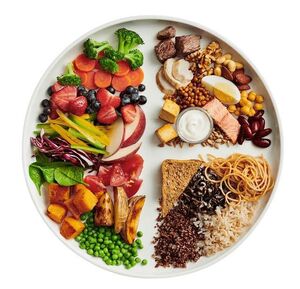

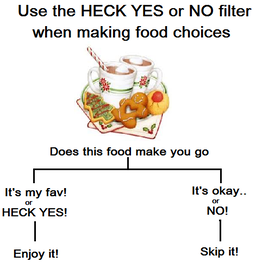
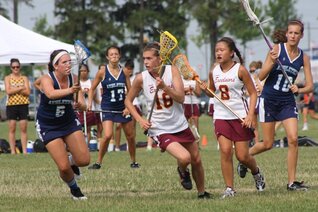
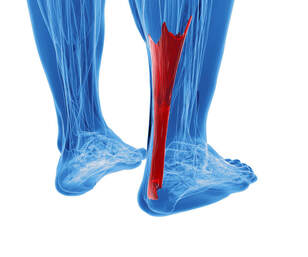


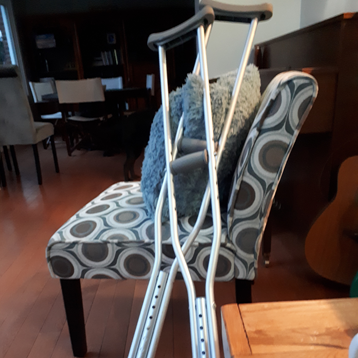
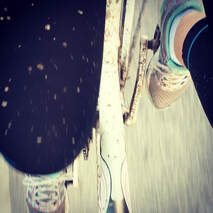
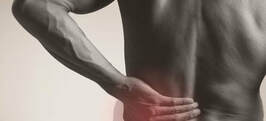






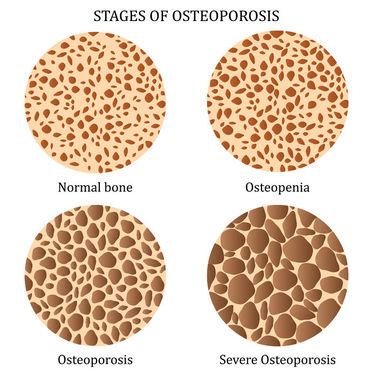
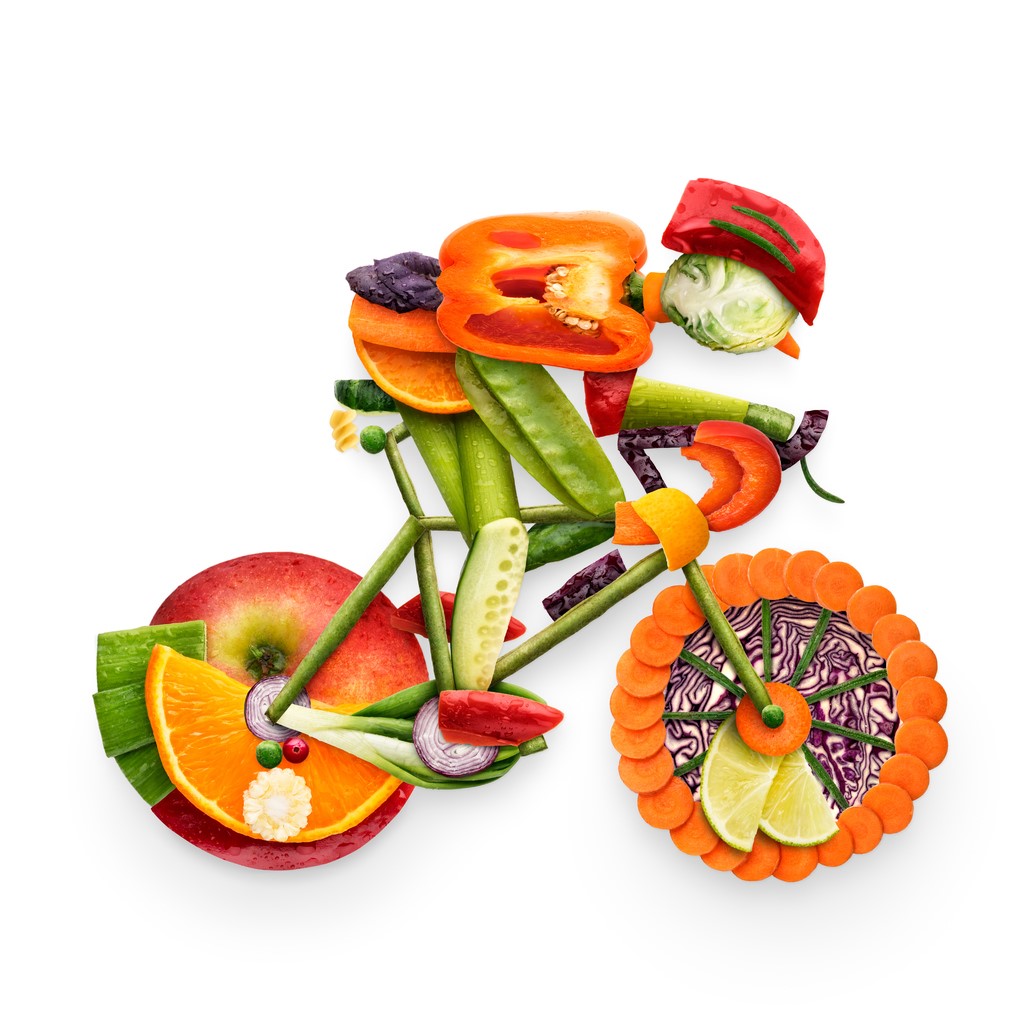
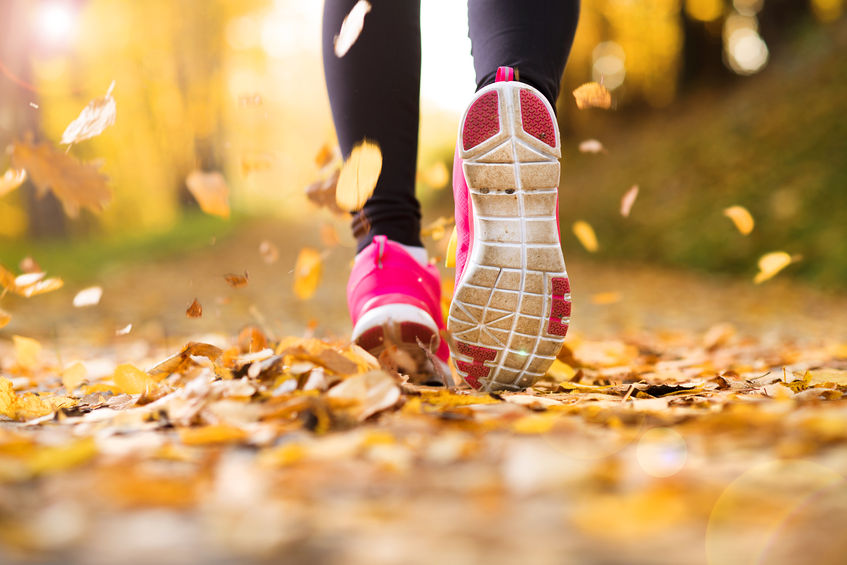



 RSS Feed
RSS Feed